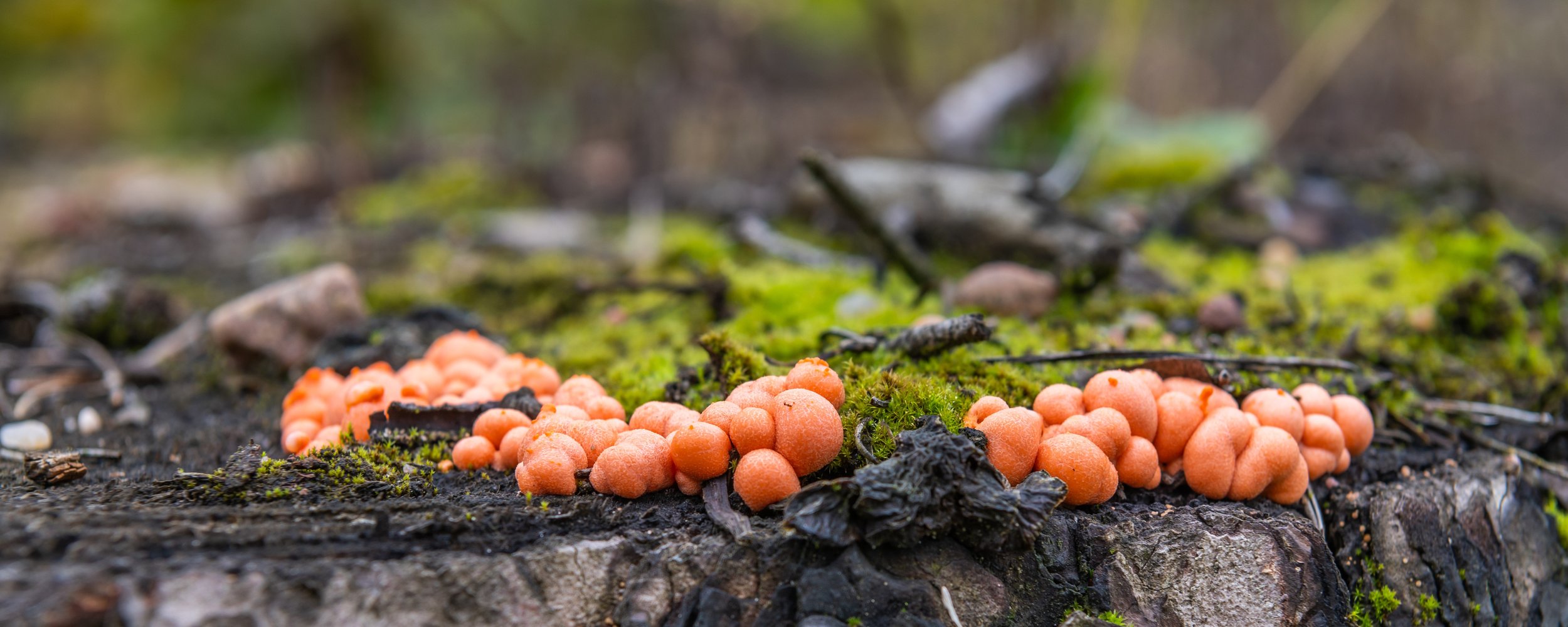
Fungi first: Mushrooms on forest fire areas
The Johann Heinrich von Thünen Institute of Forest Genetics analyses the fungi on the forest fire areas. A team of volunteers from the Pilzkundliche Arbeitsgemeinschaft Berlin-Brandenburg (PABB e.V.) is involved in the survey. The picture varies from year to year.
Fungi sometimes appear just three days after a fire. They break down toxic substances such as benzene, toluene and naphthalene in just a few months. They also play an important role in the decomposition of dead wood, leaves and needles. In doing so, they release nutrients and make them available for other living organisms.
From 2020 to 2023, almost 12.000 individual mushroom samples were collected and documented in the project areas.
In 2020, typical burnt area fungi such as the burnt area mushroom or the coal scaly fungus (Pholiota highlandensis) dominated, while in 2021 and 2022 it was predominantly wood and litter decomposing species such as red-belted bracket (Fomitopsis pinicola) or earpick fungus (Auriscalpium vulgare).
Depending on the management, the areas differ in their fungal species composition.
More than 250 species of fungi were recorded during the surveys. An unexpectedly large number of species have not yet been scientifically described.
The areas burnt again in 2022 developed a weakly pronounced, typical aspect with burnt area scalycaps (Geopyxis).
The picture gallery shows typical species:






